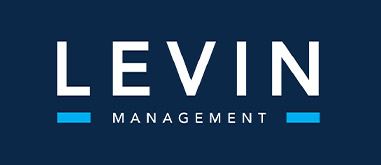Matthew K. Harding CEO & Max Gagneron VP, Construction outline the future of retail construction in NJBiz Q&A
Few industries have seen greater pandemic-fueled disruption than the retail, restaurant and entertainment sectors, which struggled over the past year as the business of selling goods, services and experiences change swiftly and markedly. Yet amid the resulting challenges, there are signs of improvement and tangible progress. Leasing activity is picking up, and so – in turn – is construction. In fact, according to Levin Management Corp. CEO Matthew K. Harding and Maxim Gagneron, the company’s vice president of construction and development, construction activity throughout the commercial real estate services firm’s shopping center portfolio is back to pre-pandemic levels. In the following exchange, Harding and Gagneron weigh in on the North Plainfield-based company’s current activity, and the role construction plays in retail dealmaking and a property’s competitive positioning today and moving forward.
Q: How does leasing activity impact construction velocity?
Harding: Amid hurdles facing the industry in 2020, our leasing team remained focused on successfully bringing deals to fruition. Now, as 2021 gains momentum, so does our associated tenant fit-out work. As an example, our team has recently completed approximately 125,000 square feet of tenant buildouts, with about 250,000 square feet of work currently underway. Another 200,000 square feet in the near-term pipeline indicates that this trending is set to continue.
Q: What are shopping center owners doing to prepare spaces to compete for tenants, many of whom have more options now due to pandemic-fueled vacancies?
Gagneron: More pre-prep work is happening before a space even goes on the market. For example, façade improvements freshen up a space and make it more attractive to prospective tenants; in the past, this is something we may not have done until a tenant was signed to the space. One such example is at St. Georges Crossing in Woodbridge, where we arranged a lease last year with Popeyes Louisiana Kitchen. The fast-casual chain just opened in January, sharing a free-standing former restaurant building with a Comcast Xfinity Retail Store, which celebrated its grand opening at the center in 2019. This fully renovated and architecturally appealing building – set on a high-visibility outparcel – played a significant role in attracting Popeyes.
Q: How important is the availability of construction services for fit-out work when it comes to attracting tenants?
Harding: National retailers are making deals again; they have come “off pause” and are taking advantage of current opportunities to lease exceptionally good real estate at a good price. Many also mandate that the property owner can deliver the space ready for occupancy. They are looking for turnkey delivery of a space, which, simply put, is having us fully build out the store. These projects are complicated, require extensive work and often must be delivered within a specific time frame. With penalties applied if dates are missed, this can become costly. This is where construction expertise becomes paramount. Utilizing third-party service providers that offer a complete package of integrated services – in-house construction management along with property operation and leasing capabilities – gives shopping center owners a distinct advantage.
Gagneron: For example, we completed a buildout for national off-price retailer Burlington Stores at Somerville Circle Shopping Center in Raritan, and currently are working on building out space for Burlington at Mill Creek at Harmon Meadow in Secaucus. We also have completed several buildouts for Ulta Beauty and will be doing more for this retailer in the future. In the case of both Burlington and Ulta, working through these leases involved setting timeframes and deadlines for space delivery. The projects illustrate how the collaboration between our leasing agents and construction department creates a holistic approach that generates value for our clients’ investments. We have strong relationships with the best professionals, including architects and engineers, as well as contractors that have done buildouts ranging from pad sites for large national tenants to less complicated fit-outs for local retailers. Tenants have greater confidence knowing their store will be built and delivered on time by someone that has done it for them, or their peers, currently or in the past. Our project managers are in the field to oversee the process.
Q: What are landlords doing to maintain curb appeal and create efficiencies at a time when renovation budgets are tighter than in the past?
Harding: As always, shopping centers with a strong tenant mix and curb appeal continue to draw retailers, consumers and investors. Arguably, achieving or upholding an environment that is both attractive and provides a safe and convenient shopping experience is more important today than ever. Efforts toward this goal can range from simple landscaping updates to much larger-scale improvements, when necessary, as well as ensuring the center is operating efficiently. Since the start of the COVID-19 pandemic, our construction department also has worked alongside our property management team to ensure we are providing an environment where our tenants can be creative and succeed. This has included incorporating signage and/or creating new pickup areas to accommodate curbside services.
Gagneron: Specific examples of recent projects include a series of renovations at Twin City Shopping Center in Jersey City over the last few years – including a new façade, stonework, and sidewalk refurbishments – that significantly enhanced the property’s curb appeal. Recently completed aesthetic enhancements at the center, which coincided with a re-commitment by Aqui Market, included converting parking lot lights to LED, new pylon signage, new post-and-rail fencing and upgraded landscaping. We have completed similar projects elsewhere within our portfolio. At Commons at Hooper in Toms River, we obtained land use entitlements for a façade renovation, pylon renovation and lighting upgrades, then managed the construction aspects of the approved improvements as well as site improvements for repaving and storm drainage.
Q: Looking ahead, how do you see retail construction changing in a post-COVID-19 world?
Harding: As in most industries, there will be a need for increased flexibility and adaptability, some of which we are already seeing. We always try to help tenants where it makes sense and where we can; today that could mean early lease extensions, which enable tenants with forward-looking vision to reinvest in and redesign their store interiors to align with trends in the post-pandemic retail environment. On a property scale, many landlords are taking a step back and focusing on what needs to be done to best position their properties for the next chapter – rather than just filling vacant space. Transformation is nothing new in the retail real estate industry. As new concepts come online while others reach their end, it is creating an ideal environment for repositioning and reinventing assets, which most likely will involve a renovation element. With the continued momentum of “live, work, shop, play” environments, adaptive reuse projects may also become part of the conversation and drive shopping center construction activity.
https://www.dropbox.com/s/mpjbl87aruksp6w/Q%26A%20Flyer.pdf?dl=0

